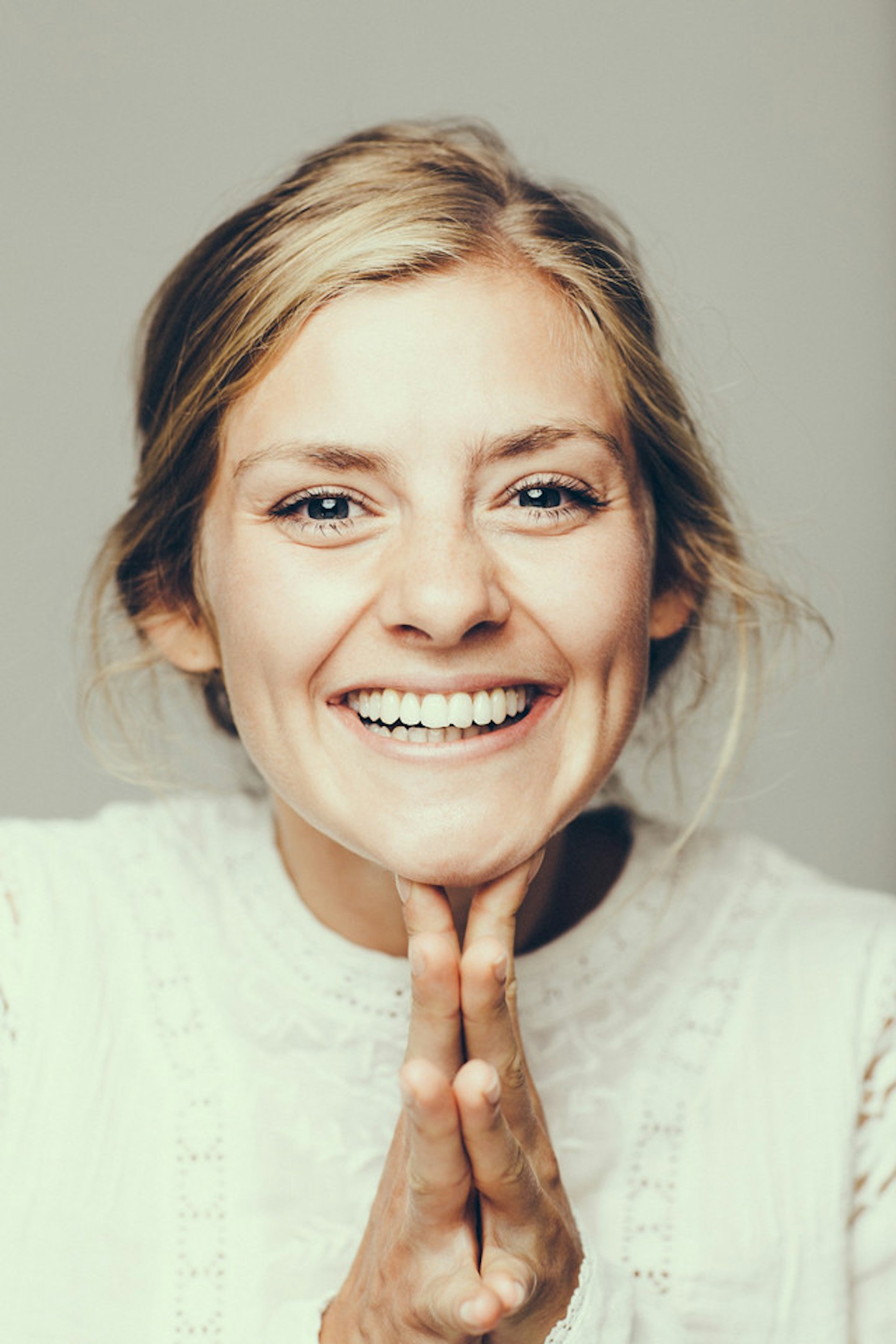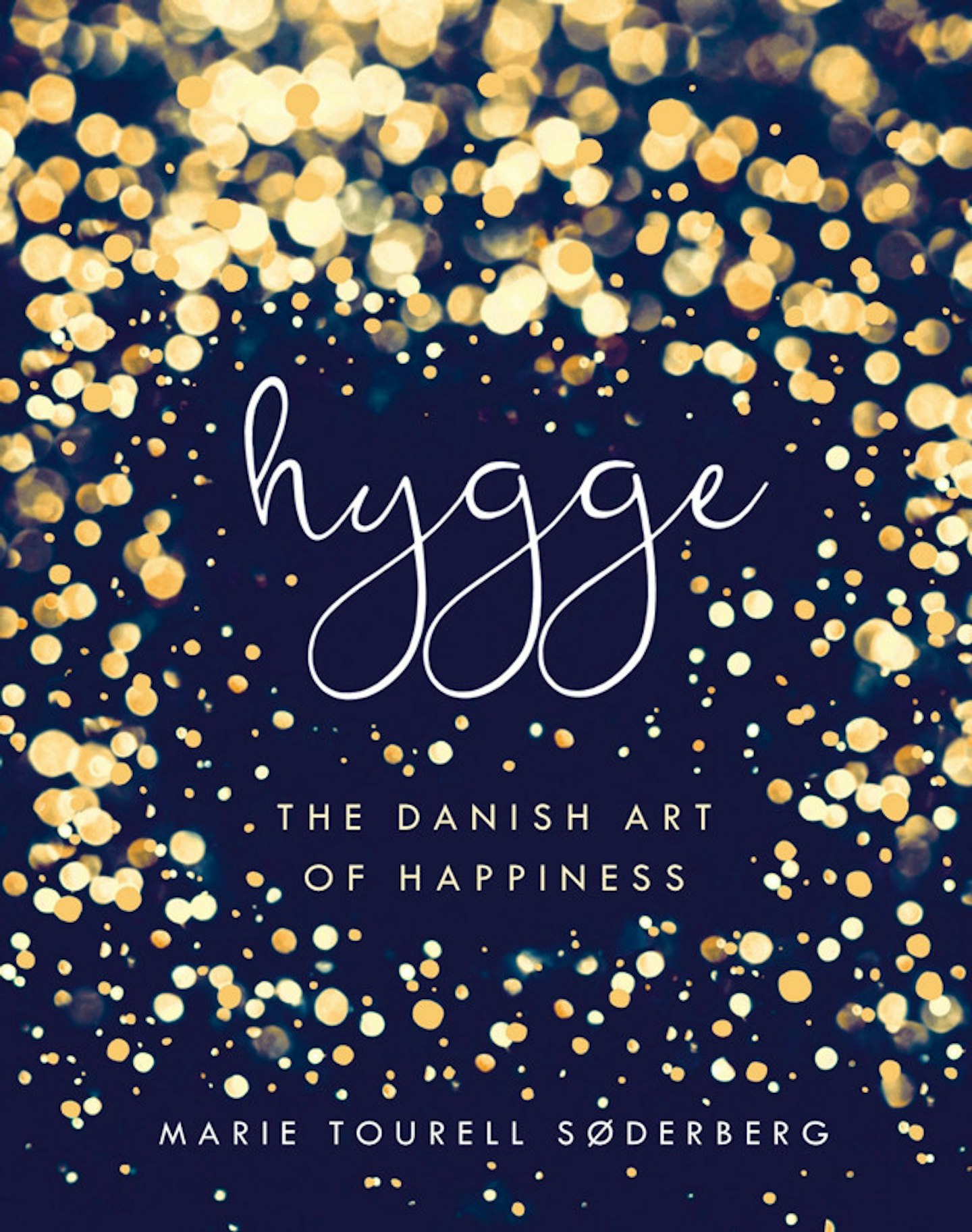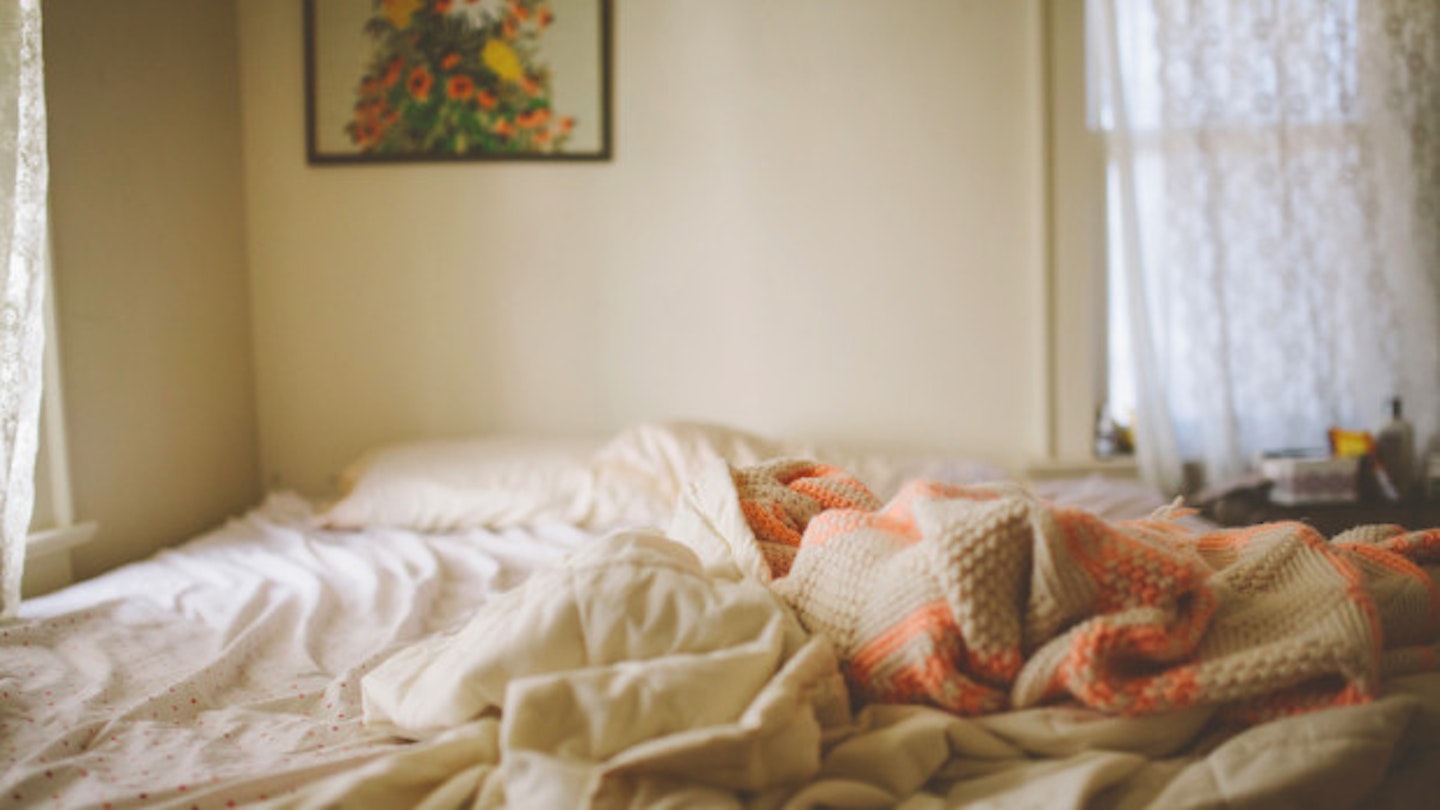Hygge is kind of a hard concept to explain. One that, like love, you totally know when you're experiencing and yet beforehand had only vague, fuzzy understanding of it.
Picture this; it’s blowing a gale outside, your best friends are in your clean and softly furnished living room, there’s plenty of red wine, the heating’s on, you’ve cooked a banger of a meal, no-one’s got work tomorrow, Midsommer Murders is on the telly, the lights are way down low so, as the song goes; let it snow let it snow, let it snow. That safe and snug feeling you can imagine you’d have in that situation? That’s hygge.
‘It’s a special atmosphere of a special moment.’ Says Marie Tourell Søderberg, a Danish actress whose beautiful new book Hygge is one of several coming out this autumn on the subject. ‘It's where everything just falls into place. Where the company is right, where the temperature is right, where we feel comforted, safe, warm and happy.'

Hygge (pronounced he-yoo-gir, sort of) has a more concrete background too. The word stems from Old Norse, the language of the Vikings, and, according to Marie, hygge was the feeling of finding shelter after a long day of being outside in the freezing cold. The cold weather of Denmark definitely still plays a factor too. But Marie thinks it's Denmark's welfare system that plays the largest part.
Denmark regularly ranks at the top of lists of the happiest countries in the world. The welfare system is notoriously one of the most comprehensive in the world; every Dane receives tax-funded healthcare, the wealth gap is one of the smallest in the world, education is free, normal working hours are no more than 37 hours a week. Sure, the Danes pay more taxes but, having less to worry about financially, Marie says, frees Danes up to focus on other things; things that satisfying the soul more.
‘We have a long history of being very privileged with this system.’ She says. ‘We have time to ourselves. Time to have a personal life with the people that we love. It’s not about "surviving" all the time. It’s about "being" a lot too.’ Because Danes have the basics covered by the government, says Marie, people are free to create, design, consider the world with wider perspective.
So, how to hygge. As busy, anally retentive Brits, we love to plan. 'Tuesday after the gym and before bed will be my two hours to relax', you might say whilst mentally running through the millions of other things you’ll be stuck doing the rest of the week. This kind of dampens the concept of hygge. ‘If you’re wanting to control it,’ Says Marie, ‘that’s kind of where hygge can fall out!’ Having some sort of organisation is good (ie you letting friends know a good time to hang out) but, trying to force cosy fun? That’s going to ruin it all.
Food is a big factor when it comes to hygge because it gathers people together. Not that you need to stress over a three-course meal, says Marie. ‘It doesn’t have to be fancy in a any way’ she promises, recalling the previous day where she went over to her friend’s house. ‘I just made a tomato sauce and some pasta and came over with that really low key food. Someone went to buy some more and suddenly we had gathered a big meal! We just let the evening stay open, to see how it would develop. We lit some candles and had warm lights all over.’

Candles help hygge enormously. Danes burn a whopping six kilos of candles a year EACH. That’s double the people in the next biggest candle burning nation in Europe (Austria) and also double the amount of bacon (and Danes love bacon) they get through a year each too according to The Little Book of Hygge (another book on hygge that’s just come out by Meik Wiking). And, as is mentioned in Marie's book, Danes have even been known to take candles on holiday with them...
‘I think it’s universal,’ Marie says of the feeling you get walking into a candlelit room. ‘It’s like how we felt when we lived in the uterus or something like that. It’s the same comfortable feeling of being wrapped in something soft, the temperature is warm and the lights are dimmed.’
In fact, you can even attribute the world famous high standard of Danish design to hygge. From retro look armchairs to huge low-hanging lampshade to G Plan-esque sideboards, it’s about recreating a safe, nurturing and pleasing environment. ‘The broader part of the population are really into design and into decorating a home in a really hygge and personal way.’ Marie says. ‘We need it becayse we’re inside so much of the year because of the climate of course.’
New factors are threatening hygge though. For starters, Marie is the first to admit that Denmark’s famous welfare system is not a ‘rosy’ as it once was. The refugee crisis has made the country prove it’s all-inclusive nature has it’s limits as they slashed benefits for refugees by 50%, urged incoming people to go elsewhere and, in a move that shocked many, approved a bill to seize the valuables of new arrivals. Marie reckons too that the growing environmental crisis will weigh heavy on Denmark’s contented nature. On the less serious side, the self-obsessive rise in ‘wellness’ through fitness and strict food obsessions, may also prove problematic for the future of hygge as people put limitations on their social life in a bid to stay healthy. ‘It is an introverted thing.’ She says of obsessive healthiness. ‘I have all the respect in the world for all people who have the stamina to live like that, but I know that, for me, it costs the hygge of the situation when I choose to say "no" to something and not engage. Something happens to the way we are together.’
And so, recommends Marie, it’s time for 'hygge 2.0' which, as she says in her book, ‘not only bears all of hygge’s positive values, but which is also out-going, open and inclusive.’ It’s something, Marie thinks, has much promise, especially with the refugee crisis. ‘There’s so much potential in meeting each other in the best version of hygge – where you can meet each other for who you are and see that we are alike and it doesn't matter if we look different and have different stories and different upbringings - we can hygge.’
In fact, Marie tells me the story of her friends, Syrian refugees now living in Denmark who, like their new Danish neighbours, spent AGES searching for the right overhead light to light their living room. It was just, when they found it, it didn't bear the same dim, warm luminosity that Marie and her friends favour. ‘It was this fluorescent light. This really, really cold and bright light.’ She laughs. ‘I was like “you really like that kind of light?” And they were like “Yes, that’s where we come from. That’s home for us.” When they lived in Syria they needed the cold light because everything else was so warm and that’s what they related to. They welcomed their guests by lighting everything up and inviting them in.’
As Brits, Marie reckons we too could benefit from embracing hygge. It’s just about figuring out what, like Marie’s Syrian friends, our version looks like. What’s important to remember though is the potential goodness the movement holds. ‘We have so many challenges in front of us that we need to solve a different way,’ She says. ‘I think hygge could be key in that sense.’
Let's get hygge-ing guys.
Hygge: The Danish Art of Happiness by Marie Tourell Søderberg is out now on Michael Joseph
Like this? Then you might also be interested in:
**7 House Plant Instagram Accounts To Give You Serious Palm Envy
Small Bedroom Hacks If Your Room Is The Size Of A Shoe Cupboard
Follow Jess on Twitter @Jess_Commons**
This article originally appeared on The Debrief.
